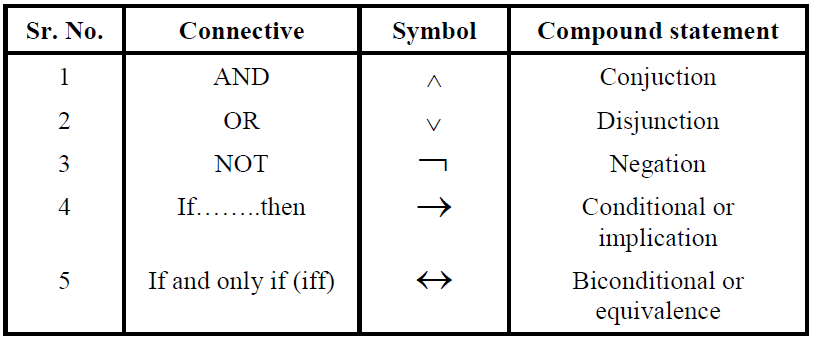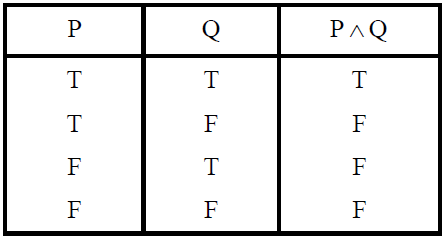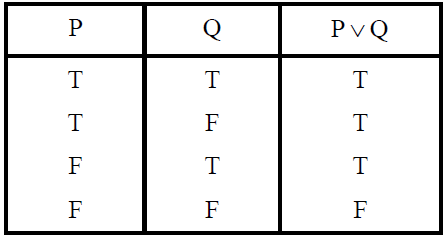SKEDSOFT
LOGICAL OPERATIONS OR LOGICAL CONNECTIVES : The phrases or words which combine simple statements are called logical connectives.
For example, ‘and’, ‘or’, ‘note’, ‘if……then’, ‘either…….or’ etc…. In the following table we list some possible connectives, their symbols & the nature of the compound statement formed by them.

Now we shall study each of basic logical connectives in details.
Basic Logical Connectives :
Conjunction (AND) : If two statements are combined by the word “and” to form a compound proposition (statement) is called the conjunction of the original
proposition. Symbolically, if P & Q are two simple statements, then ‘ P ∧Q ’ denotes the conjunction of P and Q and is read as ‘P and Q.
Since, P ∧Q is a proposition it has a truth value and this truth value depends only on the truth values of P and Q.
Specifically, if P & Q are true then P ∧Q is true; otherwise P ∧Q is false.
The truth table for conjunction is as follows.

Example 3 :
Let P : Monsoon is very good this year.
Q : The rivers are rising.
then P ∧Q : Monsoon is very good this year and rivers are rising.
Disjunction (OR) : Any two statements can be connected by the word ‘or’ to form a compound statement called disjunction.
Symbolically, if P and Q are two simple statements, then P ∧Q denotes the disjunction of P and Q and read as 'P or Q' .
The truth value of P ∧Q depends only on the truth values of P and Q. specifically if P and Q are false then P ∧ Q is false otherwise P ∧Q is true.
The truth table for disjunction is as follows.

Example 4 :
P : Paris is in France
Q : 2 3 = 6
then P ∨Q : Paris is in France or 2 3 = 6. Here, P ∨Q is True since P is true & Q is False. Thus, the disjunction P ∨Q is false only when P and Q are both false.